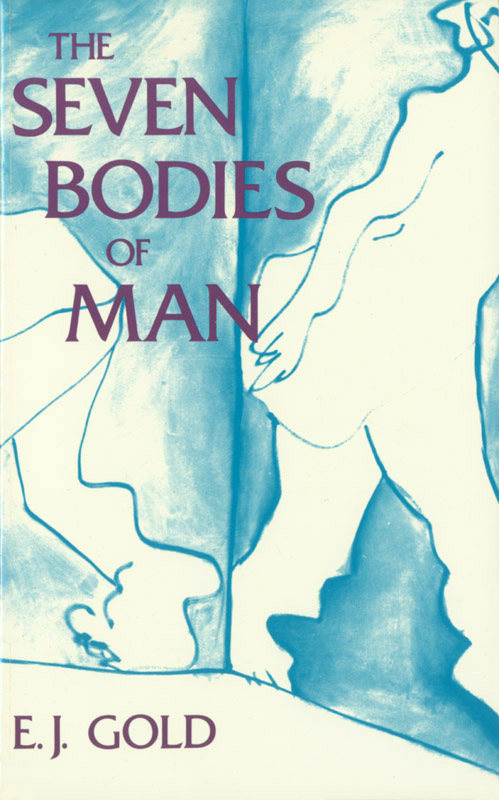



Seven Bodies of Man
by E.J. Gold
BK031
$15.95
Trade Paperback
Summary
The text explores a spiritual and alchemical framework for human evolution, positing that individuals possess seven potential bodies beyond the physical, each corresponding to a gradation of Reason. It outlines practical methods for developing these higher bodies, emphasizing techniques like impartial self-observation, the transsubstantiation of food, air, and impressions, and the strategic use of moods and intentional activities. The preface and back cover further contextualize Gold as a "teacher's teacher" and artist who, through his work, aims to challenge conventional perceptions and guide individuals toward inner awakening and personal transformation.
A book, not so much about man as the possibility of man. What are higher bodies made of? What enables an illuminated human to form these bodies? How can they be used?
FAQ
1. What are the "Seven Bodies of Man" and how do they relate to a "gradation of Reason"?
The "Seven Bodies of Man" refers to a concept that humans can develop beyond their ordinary physical form. The introduction states that "The 'I' corresponds to a gradation of Reason. As the gradation of Reason increases, man's corresponding body changes." There are eighteen possible gradations of Reason for what man can become, with each increase leading to a different corresponding body. The text outlines seven such possible bodies, starting with the organic body. Essentially, as one's level of "Reason" (implying a higher state of consciousness or being) evolves, so too does the nature of their physical and energetic existence, moving from a basic "organic body" towards more refined and higher forms like the Astral, Soul, Causal, and even Angelic Bodies. This progression is not automatic but requires conscious effort and transformation.
2. How does E.J. Gold's perspective challenge conventional understanding of human potential and self-improvement?
E.J. Gold's perspective challenges conventional understanding by asserting that ordinary man is an "organic idiot" with a limited repertoire of manifestations, largely determined in the first five years of life. He suggests that what we perceive as "self" is often a collection of habits and conditioned responses rather than a unified, fully realized being. Gold introduces the idea that "man is not a Man until he has all possible manifestations of a man," implying that most people operate far below their potential. He critiques modern education and societal norms for limiting children's exposure to diverse manifestations, thus stunting their development. His work emphasizes an "alchemical laboratory" approach to life, challenging "ordinary assumptions, both artistic and cosmological, and open new perspectives," and focusing on "voluntary evolution" and the "penetration of the subject of personal transformation" through conscious effort and rigorous self-observation, rather than passive acceptance of one's given state.
3. What is the significance of "voluntary death" in the process of human transformation according to the text?
"Voluntary death" is presented as a crucial necessity for transformation in the realms of higher gradations of reason. Each new formation of "I" (essential self) requires the "disintegration from the old." This process is described as a "resurrection, springing from the seed of a former gradation of Reason," and emphasizes that "every death and resurrection has its price to pay." In the "Real World," the "son cannot be born while his parents still live," meaning that one cannot progress to a higher state of being without the conscious sacrifice and dissolution of the previous, lower self. This isn't a literal physical death, but rather a profound shedding of old identities, habits, and limitations that act as "fertilizer for a new resurrection," allowing for the blending of a new "I" and a new "morphological formation of the body."
4. What is the "chronic" and why is its mastery essential for emotional development?
The "chronic" is described as our "primary inner entity" or "the machine's own electrically arising sense of personal identity." It represents the ingrained, egoistic self that resists conscious efforts towards transformation. Mastery of the chronic is presented as a "battle... like wrestling with the devil," and is absolutely imperative for progress past the "si-doh interval" in one's work. If the chronic becomes aware of "work activities," it will ruthlessly fight for its "egoistic continuation." The text emphasizes that the chronic can only be mastered if it is unaware it is being mastered, employing cunning and techniques like the "Bargaining Factor" and "Reward Factor." This mastery is crucial for the development of the emotional body, as the chronic is "the original director of our Emotional Body" and the source of ordinary desires. Without mastering it, one cannot develop "organic will" and authentic emotionality.
5. How are higher bodies like the Astral and Soul Bodies formed, and what role does "food" play in this process?
The formation of higher bodies, such as the Astral and Soul Bodies, is described as a material, alchemical process, akin to "electroplating." It requires the accumulation and transformation of "higher substances," which are essentially rare and precious metals like gold, deposited on specific organic formations. These substances are extracted from three types of "ordinary food": ordinary food (proteins, carbohydrates, fats), "food of air" (air itself), and "mental substances generated in the brain, nervous system and lymphatic gland system" through specific mental-emotional states. The organism is viewed as a "factory" that transmutes coarse substances into finer matter. Special voluntary efforts, including "intentional internal—and totally internalized—struggle," meditation, and even a "deep form of non-seated meditation," are necessary to process these "foods" and prevent them from being "wasted on ordinary emotion and mental activity." The "Emerald Tablet of Hermes" is cited for its instruction to "separate the fine from the coarse."
6. What is the "heart-prayer" and how is it used in the "Formation of the Soul"?
The "heart-prayer" is a powerful technique described as a "specific remedy, a prescription" for each individual, intended to facilitate the formation of the Soul Body. It involves the repetition of a prayer, not primarily as a mental idea, but blended with one's pulse so that "each pulse-beat suggests the sound of the prayer being repeated." The aim is to "organically fill" the heart with prayer, making it "reverberate automatically with the pulse" and become an "irritant to make what has been called the Pearl of Great Price." This sustained "pulse-prayer" transforms the entire body into a "soft perpetual Prayer Wheel," attuning itself to the pulse of all living things. The preparation of the body and the precise, individual nature of the prayer are crucial, and if performed incorrectly, the process can cease. It is a method for "working both for the higher and for ourselves," and when the prayer fully merges with the pulse, the physical prayer beads become unnecessary.
7. What are "invocational dinners" and how do they contribute to evolutionary transformation?
"Invocational dinners" are formal gatherings, modeled after the Last Supper, designed to create specific conditions for evolutionary transformation within a "work circle." These dinners facilitate the transmission of a "special force" through the food and atmosphere, which can "slowly transform those present." Key elements include the setting and arrangement of the table (corresponding to the angelic world), the alchemical blending of different "typicalities" (personality types) among the guests, and the atmosphere created by the food, company, and specific readings. The process aims to attract an "invoked presence" (an angel or higher force) through the law of "Like Attracts Like," causing "alchemical by-products" to be produced within the participants. This internal transformation, particularly the deposition of cellular salts and noble metals in the lymphatic system, forms the "Necklace of Buddha," which is crucial for the development of the Astral Body and subsequently the Soul Body. The dinners are designed to "provoke evolution" in a "gentle and over a long period of time" by creating a sustained "irritation of the soul."
8. What is the concept of "feasting in the Real World" and its connection to transsubstantiation?
"Feasting in the Real World" refers to a conscious and intentional way of eating, fundamentally different from ordinary, unconscious consumption. It emphasizes the practice of "invoking life into our food" rather than merely transforming it into fertilizer. The text references the biblical phrase, "He who feeds on my flesh and drinks of my blood has life eternal," suggesting a literal, alchemical interpretation. This involves a "special confession" to cleanse oneself of "bad vibrations" before partaking of "special bread" and "warm wine" that are to be "transsubstantiated into part of the larger Body of Christ." The goal is to "see, feel and sense the Body of Christ" in the food, making it "throb with life" and "living flesh" before consumption. This "real meditation" through the "power of concentration, feeling, and sensing" is a means of connecting with and becoming "joined to the Body of Christ," implying a profound transformation of the individual through their interaction with food.


